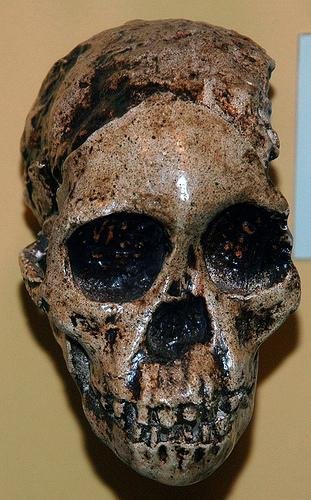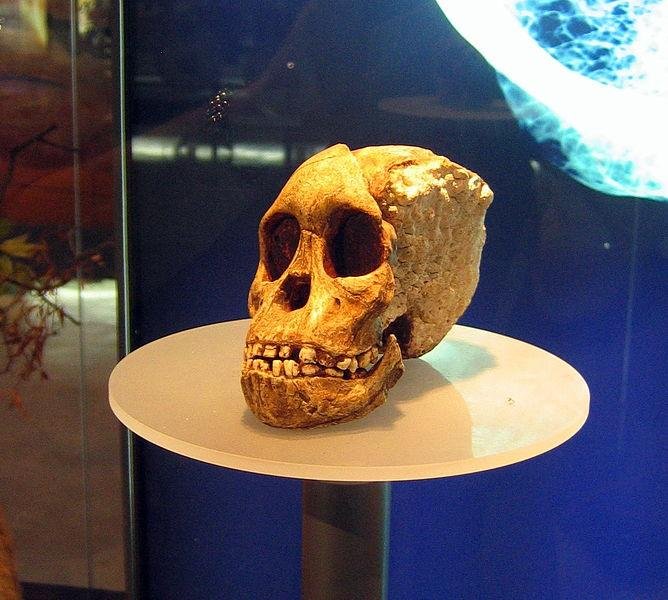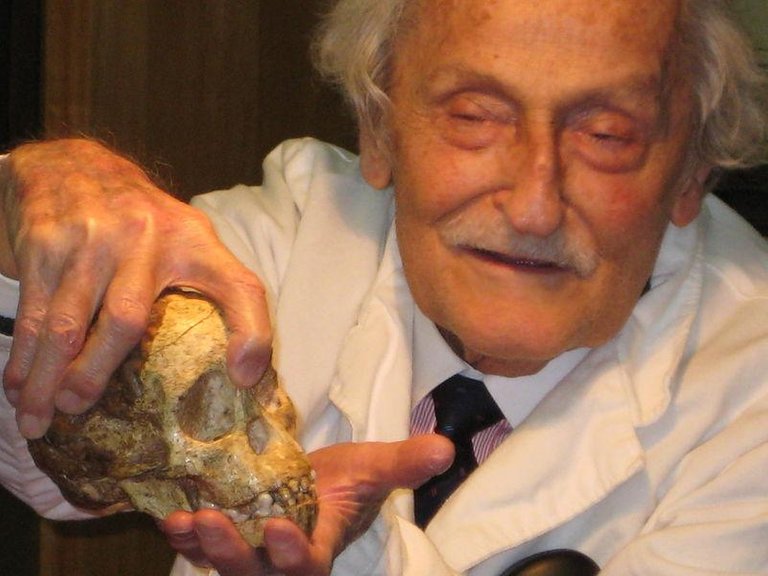Somewhere in South Africa, The report on the newly discovered skull came in; small, miniature and almost round.
Professor Raymond Dart could never have seen a more intriguing artifact as they scourged the limestone quarry near the Taungs station. The skull enclosed in a rock for more than a million years was finally released after a long and careful chipping.
Professor Raymond dart wrote on his findings:
…as the rock parted… I could view the face from the front, although the right side was still embedded…what emerged was a baby’s face, an infant with a full set of milk teeth and its permanent molars just in the process of erupting.
The Taungs skull, was similar to the skull of a young ape but it had a cranium too large which implied that the skull contained a large brain and could probably have walked erect and the professor estimated the creature would have been about four feet tall and weighed about ninety pounds when fully grown.

Australopithecus. The creature finally had a name and also possessed some certain human characteristics that indicated a relationship between the apes and man. In the journal nature, Professor Raymond Dart wrote explicitly:
…the specimen is of importance because it exhibits an extinct race of apes intermediate between living anthropoids and man.
Many eyes settled inquisitively on the skull and among these was Dr. Robert Broom who studied the Australopithecus so closely and arrived at a similar conclusion- it was an intermediate form of life.

Proof for evolution? Perhaps. There are many who would have wanted to witness such spectacle; the likes Charles Darwin, Dr. harry Shapiro of the American Museum of natural History, and even the infamous Dr. Arthur Smith Woodward.
A comment on the discovery was later made in an editorial published in the London Observer:
There must needs be some who will say that the discovery of a damaged skull in sub-tropical Africa makes no difference. Admittedly it does not affect us materially like the discovery of wireless or electric light. The difference is in outlook. The stimulus to all progress id man’s innate belief that he can grasp the scheme of things or his place therein. But this stimulus compels him to track his career backward to its first beginnings as well as carry it forward to its ultimate end. The more clearly he sees whence he has come, the more clearly he will discern whither he is bound. Hence it is not an accident that an age of immense scientific advance produced Darwin with his Theory of Origins, or that a later period of social unrest has stimulated archaeologists to reveal the strength of the social traditions. Viewed in some such intellectual context as this, the Taungs skull is at once a reminder of limitations and an encouragement to further endeavor. Its importance, significant in itself, is enhanced by the fact that its message has been preserved through unimaginable ages for discovery here and now.
